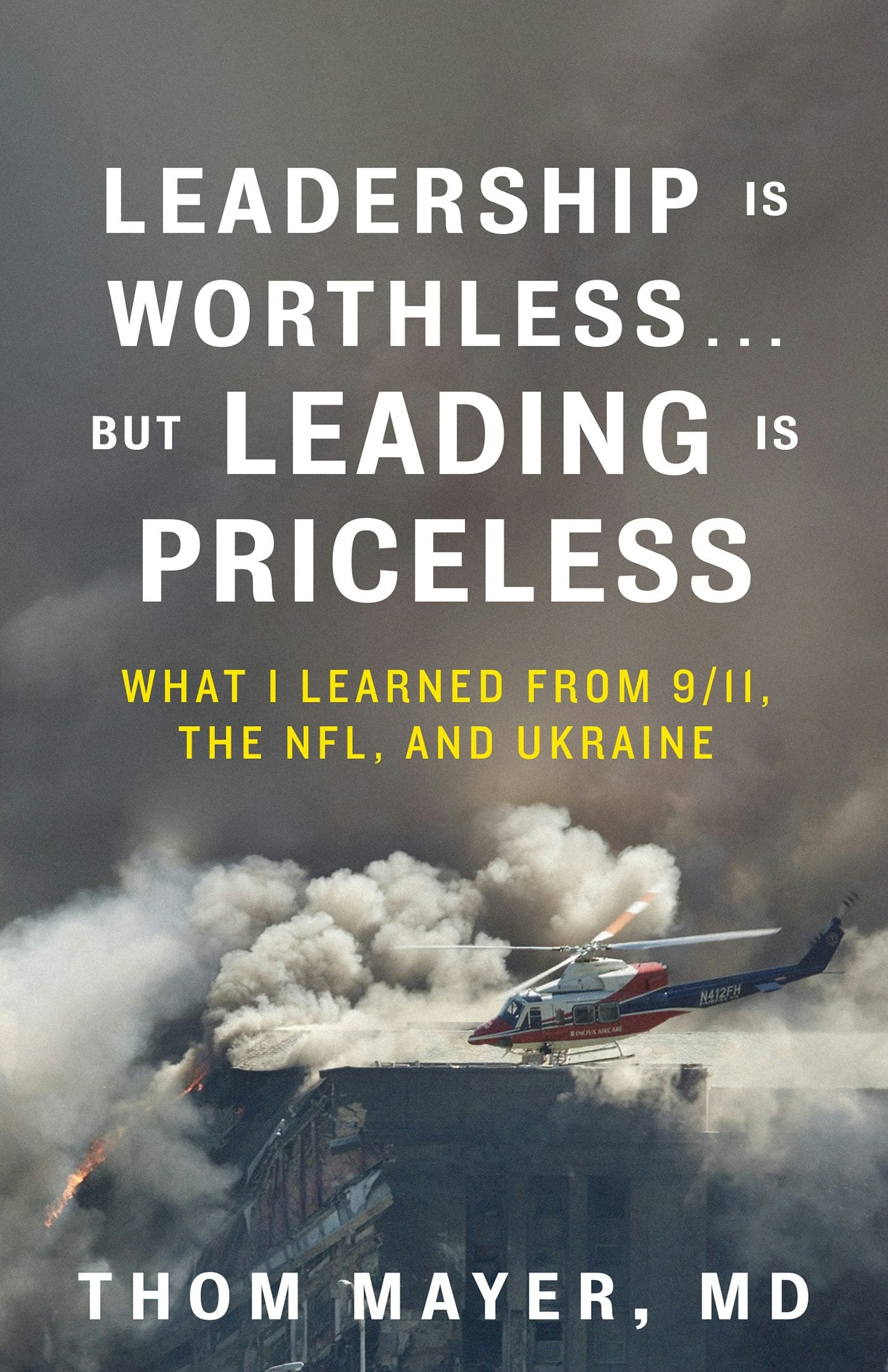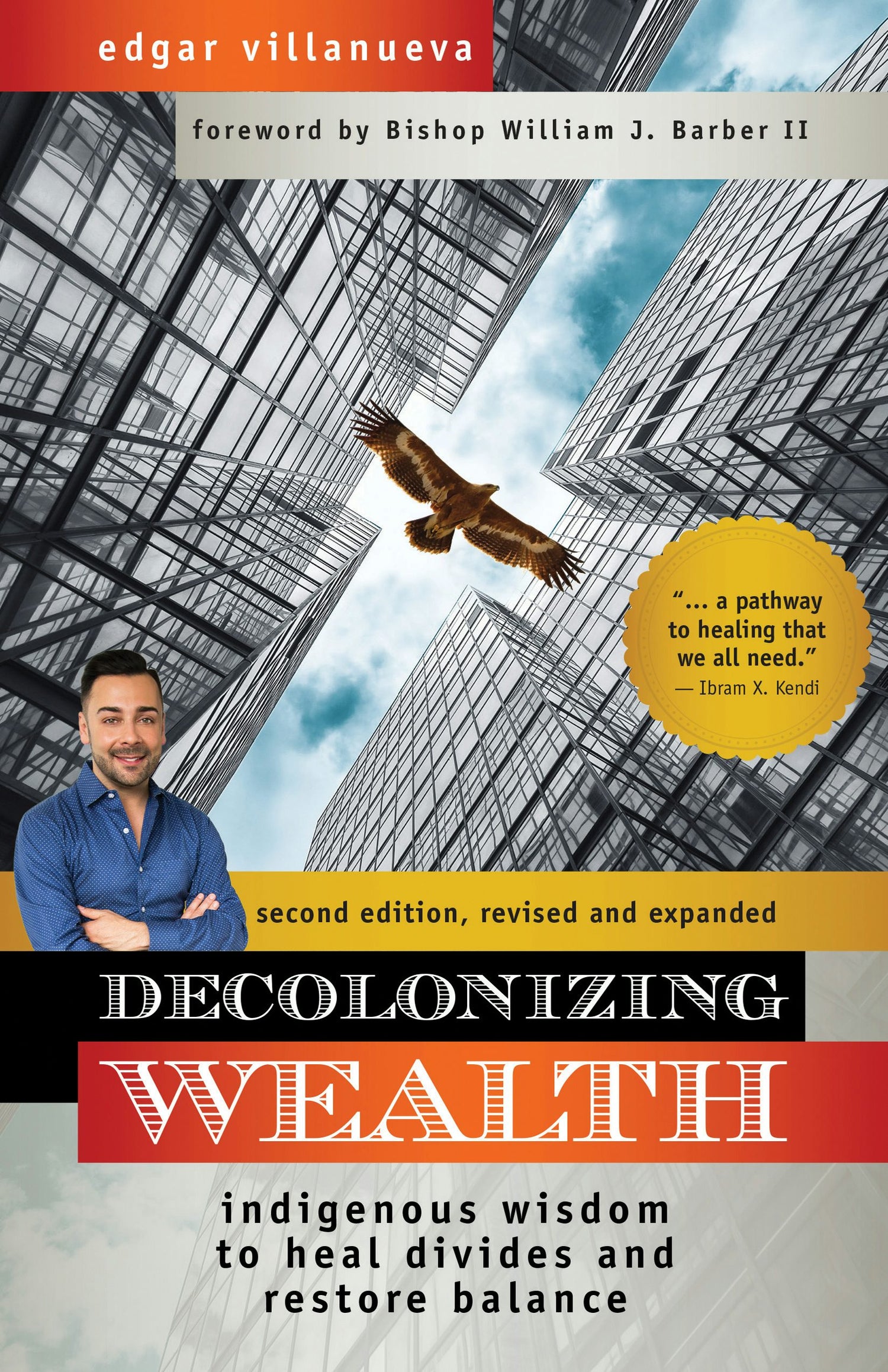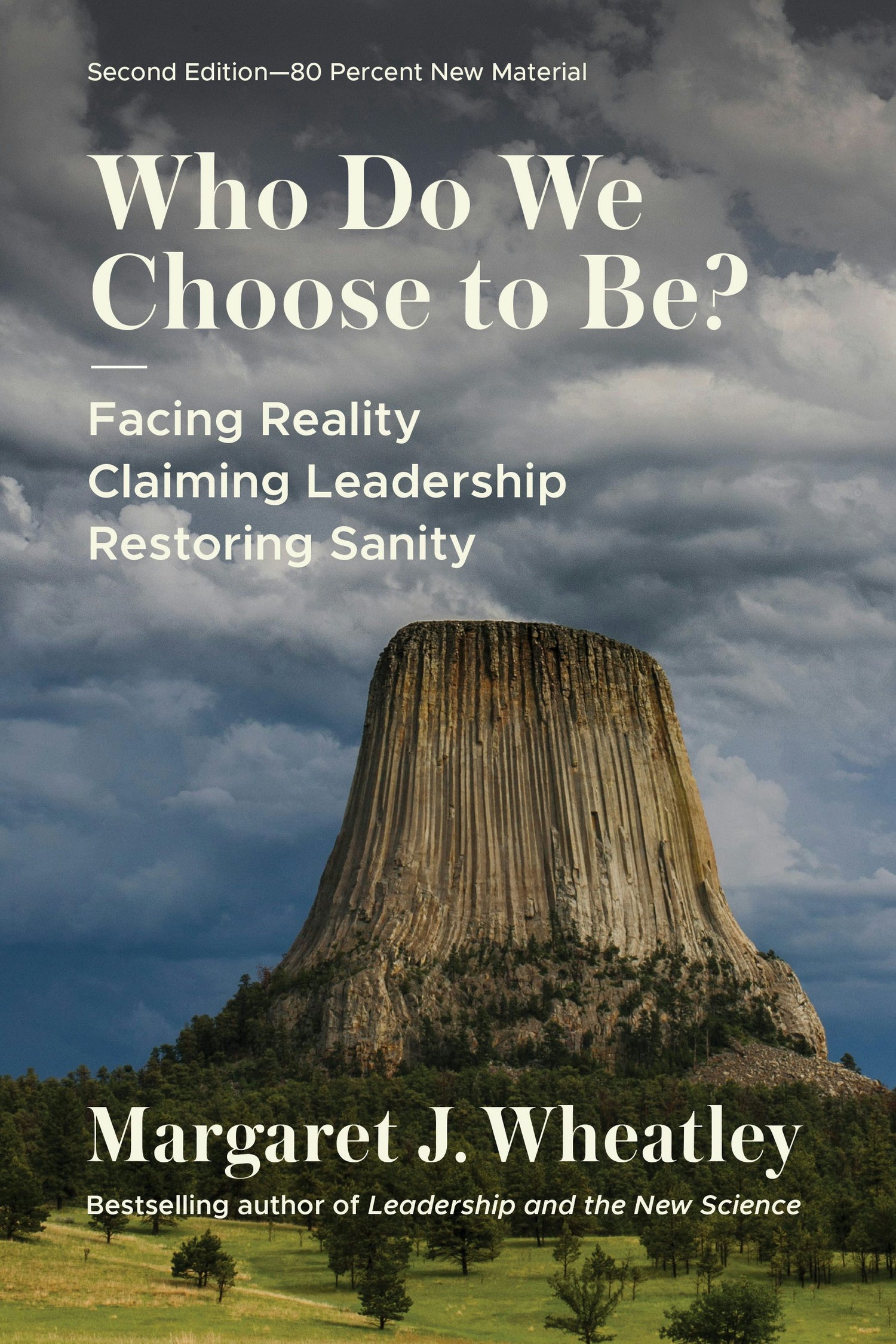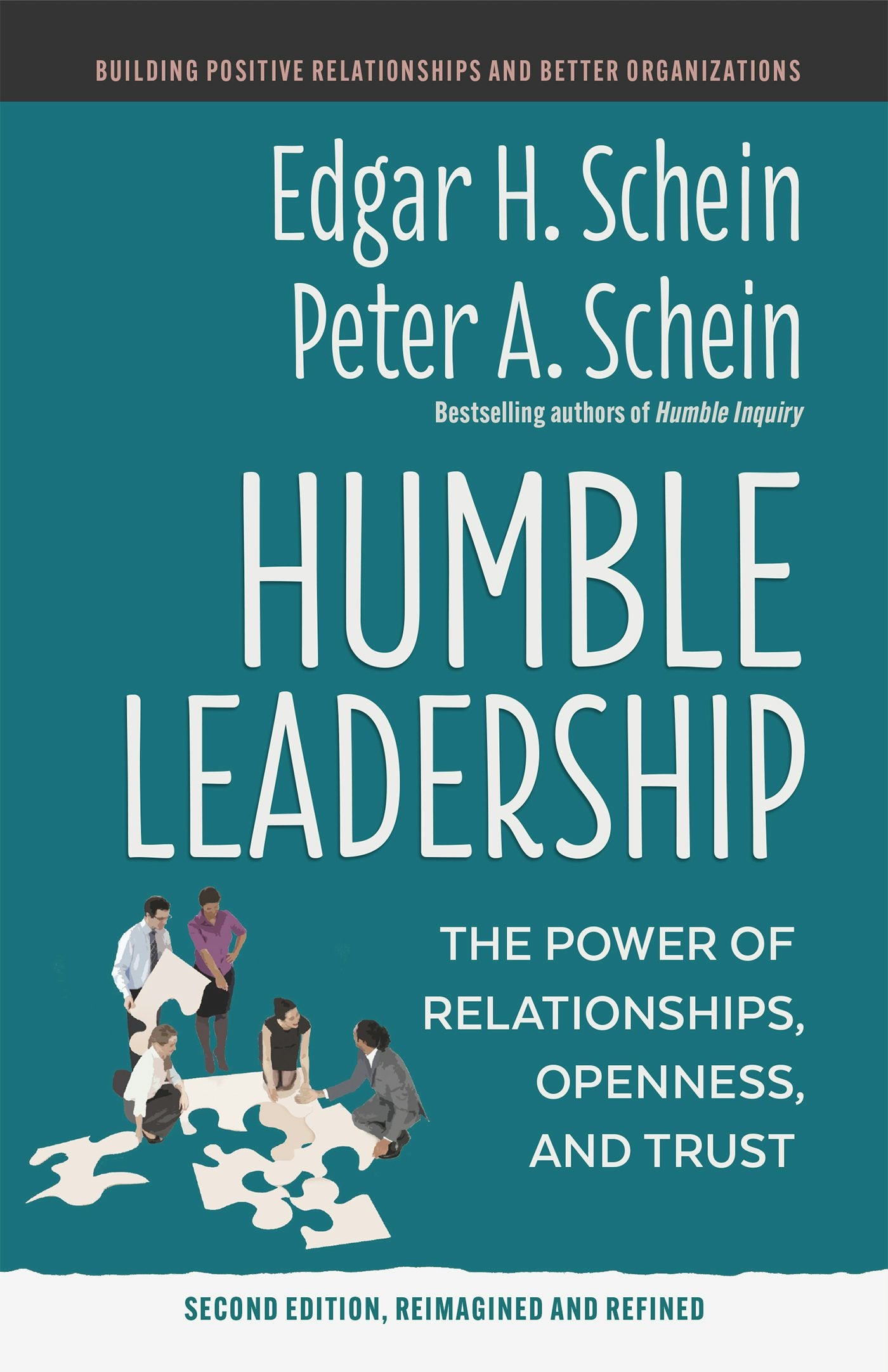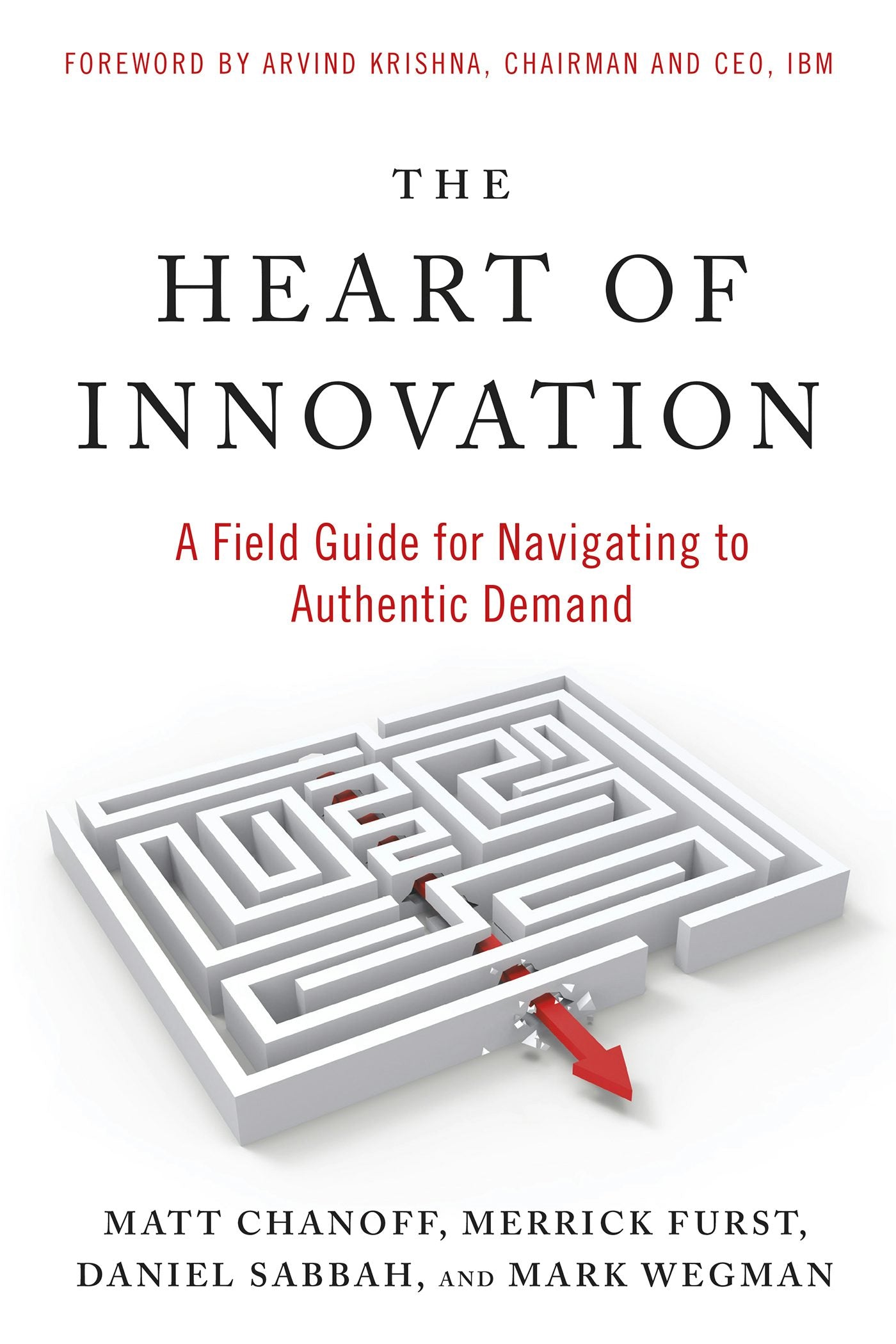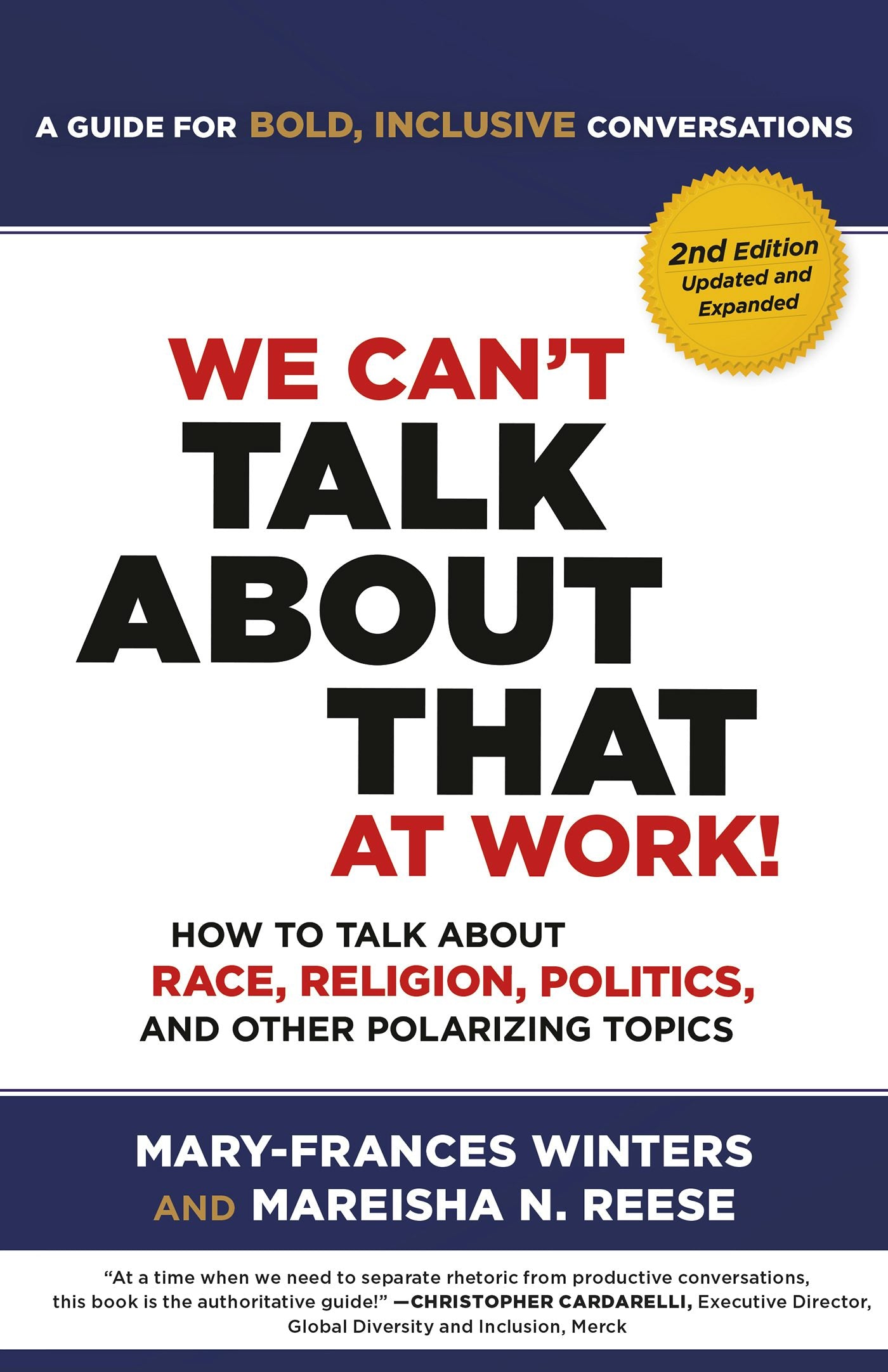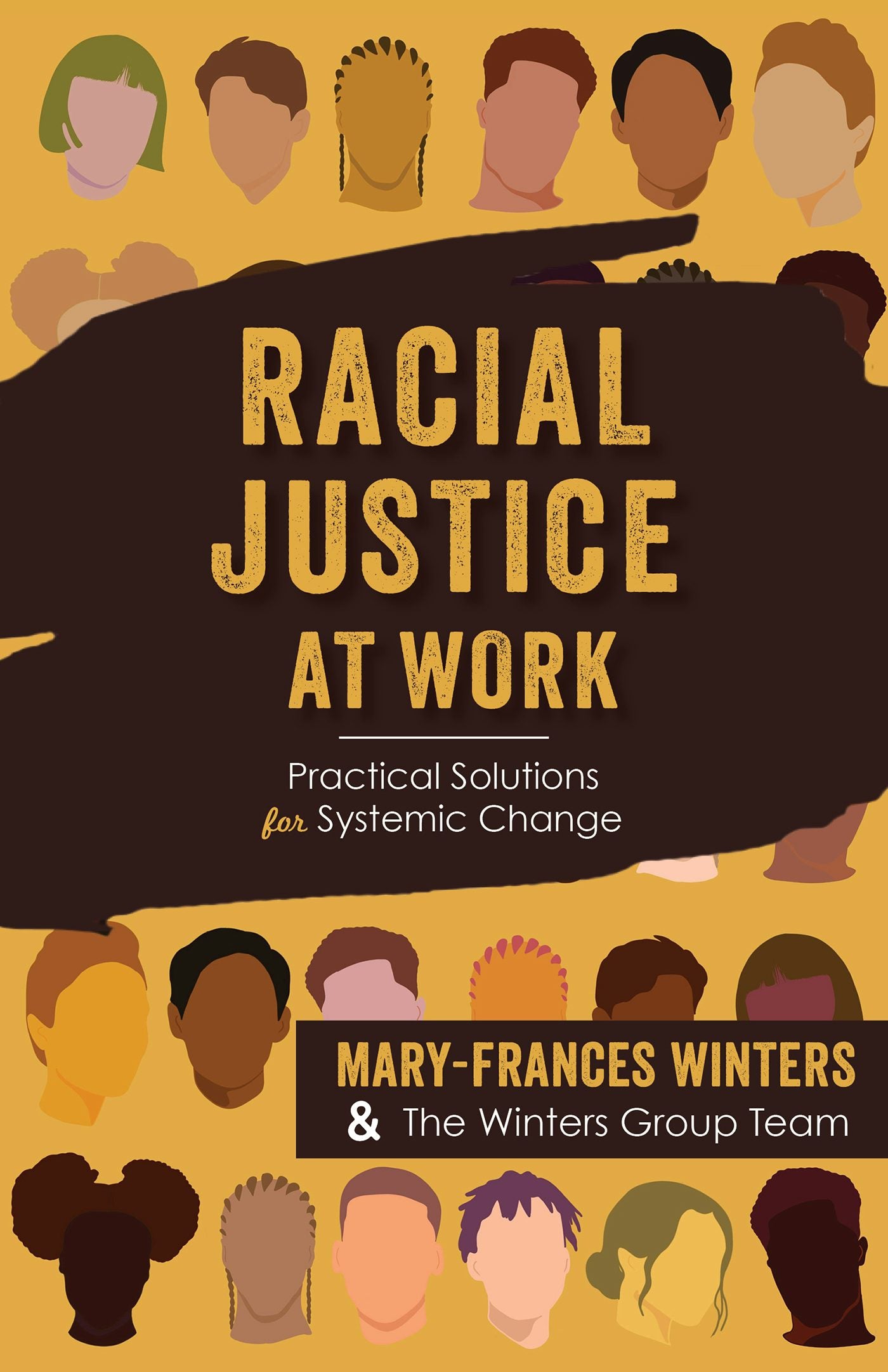Sort by:
These leadership lessons work for leaders at every level when everything goes wrong, from the doctor who saved lives after the 9/11 attacks, in war-torn Ukraine, and on the NFL sidelines.
Dr. Thom Mayer doesn’t just talk about leadership: he lives it in the world’s most high-stakes situations. From commanding the 9/11 Pentagon rescue operation to rushing onto NFL fields during medical emergencies to training doctors in war-torn Ukraine, Mayer has learned that leadership isn’t about titles or positions. It’s about action.
In this practical guide, Mayer reveals eleven provocative principles that flip conventional leadership wisdom: “Leadership is worthless . . . but leading is priceless.” “Power is worthless . . . but influence is priceless.” “Success is worthless . . . but failure is priceless.” Through gripping stories from the Pentagon’s smoking corridors, NFL sidelines, and Ukrainian hospitals, he shows how real leaders emerge not from corner offices but from moments of crisis when someone must step up and act.
Whether readers are managing a team, raising a family, or facing a crossroads, Mayer’s hard-won insights will transform how readers think about influence, teamwork, and making decisions under pressure. This isn’t theoretical leadership. Mayer offers battle-tested wisdom from someone who has led when lives hung in the balance.
Now in paperback with a new discussion guide for leadership development programs.
Dr. Thom Mayer doesn’t just talk about leadership: he lives it in the world’s most high-stakes situations. From commanding the 9/11 Pentagon rescue operation to rushing onto NFL fields during medical emergencies to training doctors in war-torn Ukraine, Mayer has learned that leadership isn’t about titles or positions. It’s about action.
In this practical guide, Mayer reveals eleven provocative principles that flip conventional leadership wisdom: “Leadership is worthless . . . but leading is priceless.” “Power is worthless . . . but influence is priceless.” “Success is worthless . . . but failure is priceless.” Through gripping stories from the Pentagon’s smoking corridors, NFL sidelines, and Ukrainian hospitals, he shows how real leaders emerge not from corner offices but from moments of crisis when someone must step up and act.
Whether readers are managing a team, raising a family, or facing a crossroads, Mayer’s hard-won insights will transform how readers think about influence, teamwork, and making decisions under pressure. This isn’t theoretical leadership. Mayer offers battle-tested wisdom from someone who has led when lives hung in the balance.
Now in paperback with a new discussion guide for leadership development programs.
This second edition expands the provocative analysis of the racist colonial dynamics at play in philanthropy and finance into other sectors and offers practical advice on how anyone can be a healer.
Though it seems counterintuitive, the $1 trillion philanthropic industry has evolved to mirror colonial structures ultimately doing more harm than good. Edgar Villanueva has seen past the field's glamorous, altruistic façade, and into its shadows: white supremacy, savior complexes, and internalized oppression. In this critically important book, he shows how to make money a tool of love, to help us thrive rather than to hurt and divide us.
The second edition has two new chapters. “Medicine Beyond Money” relates inspiring examples of people using their resources to decolonize entertainment, museums, libraries, land ownership, and much more . “Story as Medicine” explains how sharing our stories is a vital part of that process.
Across history and to the present day, the accumulation of wealth is steeped in trauma. Drawing from Native traditions, Villanueva empowers individuals and institutions to acknowledge and begin to repair the damage done through his Seven Steps to Healing: Grieve, Apologize, Listen, Relate, Represent, Invest, and Repair. As Villanueva writes “Everyone has a role in the process of healing. All our suffering is mutual. All our healing is mutual. All our thriving is mutual.”
Though it seems counterintuitive, the $1 trillion philanthropic industry has evolved to mirror colonial structures ultimately doing more harm than good. Edgar Villanueva has seen past the field's glamorous, altruistic façade, and into its shadows: white supremacy, savior complexes, and internalized oppression. In this critically important book, he shows how to make money a tool of love, to help us thrive rather than to hurt and divide us.
The second edition has two new chapters. “Medicine Beyond Money” relates inspiring examples of people using their resources to decolonize entertainment, museums, libraries, land ownership, and much more . “Story as Medicine” explains how sharing our stories is a vital part of that process.
Across history and to the present day, the accumulation of wealth is steeped in trauma. Drawing from Native traditions, Villanueva empowers individuals and institutions to acknowledge and begin to repair the damage done through his Seven Steps to Healing: Grieve, Apologize, Listen, Relate, Represent, Invest, and Repair. As Villanueva writes “Everyone has a role in the process of healing. All our suffering is mutual. All our healing is mutual. All our thriving is mutual.”
In a world we cannot recognize, how do we find a way forward? In this world we do not understand, how do we know what to do? When so little is comprehensible, what is meaningful work? What is genuine contribution?
Bestselling author Margaret Wheatley has summoned us to be courageous leaders who strengthen community and rely on fully engaged people since her 1992 classic book, Leadership and the New Science, and eight subsequent books. In response to how quickly society is changing and the exponential increase in leadership challenges, this second edition of her latest bestseller is 80% new material.
How do we see clearly so that we can act wisely? Wheatley brings present reality into clear and troubling focus using multiple lenses of Western and Indigenous sciences, and the historic patterns of collapse in complex civilizations. With gentle but insistent guidance to face reality, she offers us the path and practices to be sane leaders who know how to evoke people's inherent generosity, creativity, and kindness.
Skillfully weaving science, history, exemplars, poetry, and quotes with stories and practices, Wheatley asks us to be Warriors for the Human Spirit, leaders and citizens who stay engaged, choose service over self, stand steadfast in the midst of crises, and offer our reliable presence of compassion and insight no matter what.
Bestselling author Margaret Wheatley has summoned us to be courageous leaders who strengthen community and rely on fully engaged people since her 1992 classic book, Leadership and the New Science, and eight subsequent books. In response to how quickly society is changing and the exponential increase in leadership challenges, this second edition of her latest bestseller is 80% new material.
How do we see clearly so that we can act wisely? Wheatley brings present reality into clear and troubling focus using multiple lenses of Western and Indigenous sciences, and the historic patterns of collapse in complex civilizations. With gentle but insistent guidance to face reality, she offers us the path and practices to be sane leaders who know how to evoke people's inherent generosity, creativity, and kindness.
Skillfully weaving science, history, exemplars, poetry, and quotes with stories and practices, Wheatley asks us to be Warriors for the Human Spirit, leaders and citizens who stay engaged, choose service over self, stand steadfast in the midst of crises, and offer our reliable presence of compassion and insight no matter what.
For too long, women have been told to confine themselves-physically, socially, and emotionally. Eliza VanCort says now is the time for women to stand tall, raise their voices, and claim their space.
Women fight the pressure to make themselves small in private, professional, and public spaces. VanCort, a teacher, consultant, and speaker, provides the necessary tools for women to rewrite the rules and create the stories of their choosing safely and without apology.
VanCort identifies the five key behaviors of all “Space-Claiming Queens”: use your voice and posture to project confidence and power, end self-sabotage, forge connections, neutralize unsafe spaces, and unite across differences. Through personal narrative, research, and actionable strategies, VanCort provides how-tos on combating challenges, such as antimentors and microaggressions, and gives advice for building up your “old girls” club, asking for what you're worth, and owning your space without apology.
Bold, fun, and enlightening, this book is birthed from VanCort's incredible story. Having a mother with schizophrenia forced VanCort to learn to be small and invisible at an early age, and suffering a traumatic brain injury as an adult required her to rethink communication from the ground up. Drawing on these experiences, and those of real women everywhere, VanCort empowers women to claim space for themselves and for their sisters with courage, empathy, and conviction because “when we rise together, we rise so much higher.”
Women fight the pressure to make themselves small in private, professional, and public spaces. VanCort, a teacher, consultant, and speaker, provides the necessary tools for women to rewrite the rules and create the stories of their choosing safely and without apology.
VanCort identifies the five key behaviors of all “Space-Claiming Queens”: use your voice and posture to project confidence and power, end self-sabotage, forge connections, neutralize unsafe spaces, and unite across differences. Through personal narrative, research, and actionable strategies, VanCort provides how-tos on combating challenges, such as antimentors and microaggressions, and gives advice for building up your “old girls” club, asking for what you're worth, and owning your space without apology.
Bold, fun, and enlightening, this book is birthed from VanCort's incredible story. Having a mother with schizophrenia forced VanCort to learn to be small and invisible at an early age, and suffering a traumatic brain injury as an adult required her to rethink communication from the ground up. Drawing on these experiences, and those of real women everywhere, VanCort empowers women to claim space for themselves and for their sisters with courage, empathy, and conviction because “when we rise together, we rise so much higher.”
Winner of the Thinkers50 2023 Leadership Award
One of Thinkers50's Ten Best Management Books of 2023
“A timely, actionable book on the virtues that every great leader needs to learn.”
—ADAM GRANT, #1 New York Times bestselling author of Think Again and host of the TED podcast WorkLife
Leadership is simply a series of moments, and this book gives you the tools to turn each moment into an opportunity to leave a positive legacy for those you lead.
In this ground-breaking book, award-winning leadership expert and business leader Kirstin Ferguson has written a much-needed practical guide for every modern leader. Whether you are the head of one of the largest companies in the world, supervising a small team, or guiding your family, it will be your ability to integrate your head and heart that will influence your success in leading others and navigating our complex world.
Combining studies from leading thinkers in the field with her own research, and more than three decades of personal experience, Kirstin explains the 8 key attributes of a head and heart leader and provides the tools to measure your own approach. Along the way, she shares her conversations with modern leaders from a broad range of backgrounds whose stories will surprise you, challenge your thinking and inspire you to be the type of leader the world needs.
More Honors for Head & Heart:
Royal Society of Arts Career Book Award
Next Big Idea Club “Must Read”
Shortlisted in the 2023 Porchlight Business Book Awards
Shortlisted in the 2023 Australian Business Book Awards
Named in HR Magazine Winter Reading list
One of Thinkers50's Ten Best Management Books of 2023
“A timely, actionable book on the virtues that every great leader needs to learn.”
—ADAM GRANT, #1 New York Times bestselling author of Think Again and host of the TED podcast WorkLife
Leadership is simply a series of moments, and this book gives you the tools to turn each moment into an opportunity to leave a positive legacy for those you lead.
In this ground-breaking book, award-winning leadership expert and business leader Kirstin Ferguson has written a much-needed practical guide for every modern leader. Whether you are the head of one of the largest companies in the world, supervising a small team, or guiding your family, it will be your ability to integrate your head and heart that will influence your success in leading others and navigating our complex world.
Combining studies from leading thinkers in the field with her own research, and more than three decades of personal experience, Kirstin explains the 8 key attributes of a head and heart leader and provides the tools to measure your own approach. Along the way, she shares her conversations with modern leaders from a broad range of backgrounds whose stories will surprise you, challenge your thinking and inspire you to be the type of leader the world needs.
More Honors for Head & Heart:
Royal Society of Arts Career Book Award
Next Big Idea Club “Must Read”
Shortlisted in the 2023 Porchlight Business Book Awards
Shortlisted in the 2023 Australian Business Book Awards
Named in HR Magazine Winter Reading list
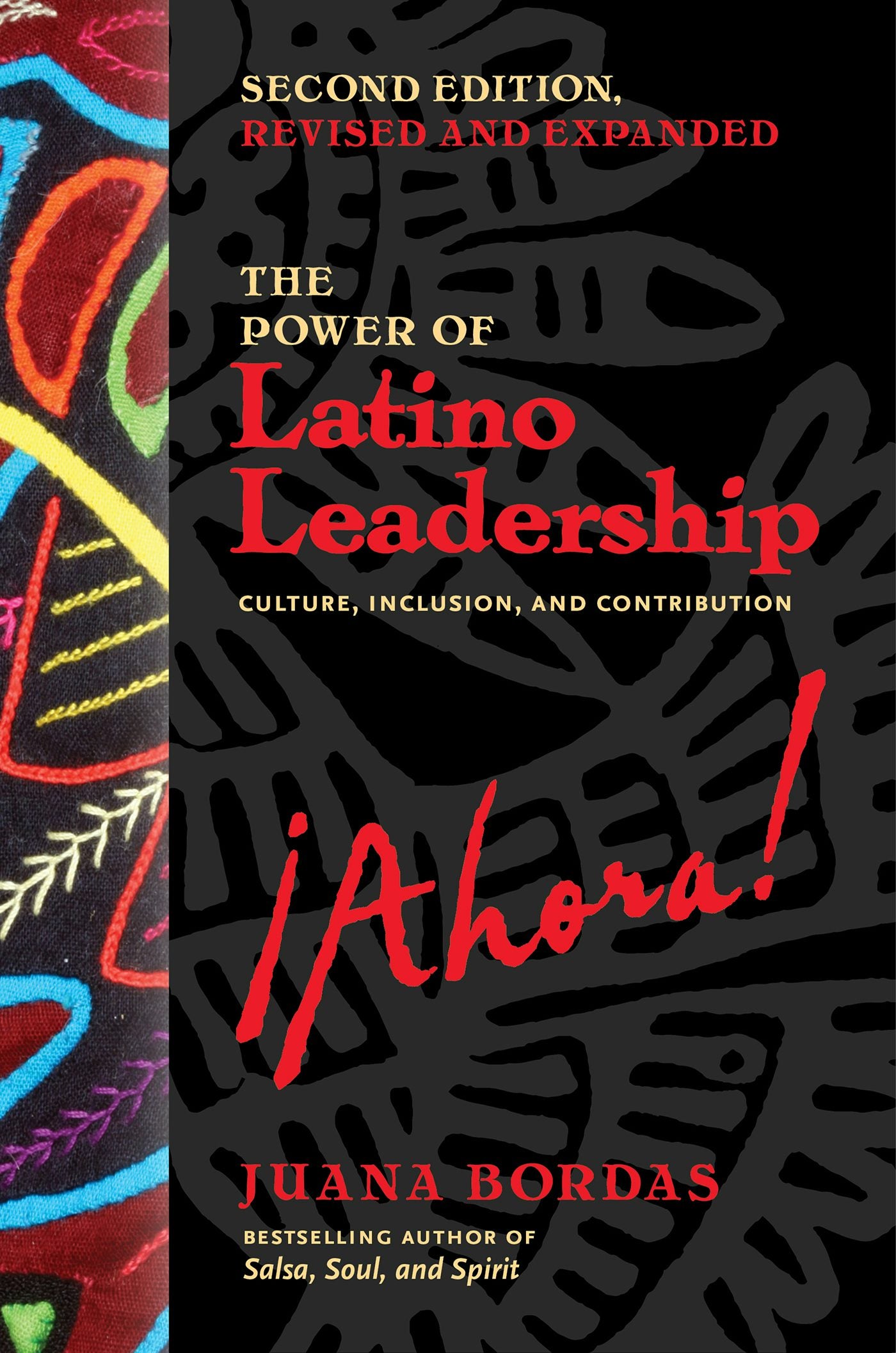
Juana Bordas
The Power of Latino Leadership, Second Edition, Revised and Updated
2695
$26.95
Unit price perJuana Bordas
The Power of Latino Leadership, Second Edition, Revised and Updated
2695
$26.95
Unit price per
Experience the power of inclusion, community, and taking action! An updated, expanded edition.
By 2045 Latinos will make up 1 in 4 Americans. They are projected to be 78% of the new entries into the labor force in the next ten years. By sheer numbers alone, Latinos will shape the 21st Century. What does it take to lead such a varied and vibrant people who hail from twenty-six countries and are a blend of different races? And what can leaders of all cultures and ethnicities learn from how Latinos lead?
Juana Bordas takes us on a journey to the very heart and soul of Latino leadership. She offers 10 principles that richly illustrate the inclusive, people-centered, socially responsible, and life-affirming ways Latinos have led their community. This model is uniquely suited to this century's multicultural, global age.
This new and expanded edition includes a chapter on intergenerational leadership that recognizes vast generational shifts are occurring: ten thousand Baby Boomers retire every day and Millennials and Zs are the largest generations in history. Six out of 10 Latinos are millennials. This new chapter can guide us in preparing the next generations to take the helm of leadership.
This unprecedented and wide-ranging book shows that Latino leadership is indeed powerful and distinctive and has lessons that can inform leaders of every background.
By 2045 Latinos will make up 1 in 4 Americans. They are projected to be 78% of the new entries into the labor force in the next ten years. By sheer numbers alone, Latinos will shape the 21st Century. What does it take to lead such a varied and vibrant people who hail from twenty-six countries and are a blend of different races? And what can leaders of all cultures and ethnicities learn from how Latinos lead?
Juana Bordas takes us on a journey to the very heart and soul of Latino leadership. She offers 10 principles that richly illustrate the inclusive, people-centered, socially responsible, and life-affirming ways Latinos have led their community. This model is uniquely suited to this century's multicultural, global age.
This new and expanded edition includes a chapter on intergenerational leadership that recognizes vast generational shifts are occurring: ten thousand Baby Boomers retire every day and Millennials and Zs are the largest generations in history. Six out of 10 Latinos are millennials. This new chapter can guide us in preparing the next generations to take the helm of leadership.
This unprecedented and wide-ranging book shows that Latino leadership is indeed powerful and distinctive and has lessons that can inform leaders of every background.
Leadership legend and bestselling author Ken Blanchard returns with trust expert and thought leader Randy Conley to present a structured playbook based on the bestselling Simple Truths of Leadership.
The companion playbook to Simple Truths of Leadership expands on the book's 52 essential principles of servant leadership and trust building. This structured playbook provides weekly prompts and exercises to help you track your progress toward your leadership goals. It focuses on one Simple Truth per week and includes:
• A summary of each Simple Truth
• A game plan for using each truth in your workplace, including thought-provoking questions and exercises to challenge your thinking and cause you to consider new ideas about leadership
• A Call to Action to “Try It This Week”
With so much of today's workforce feeling disengaged from the work they do, it's critical for leaders to move away from self-serving methods and embrace servant leadership to put their followers' needs before their own. And by journaling alongside servant leadership principles, you will be able to turn the common sense behind these simple truths into common practice for you and your organization.
The companion playbook to Simple Truths of Leadership expands on the book's 52 essential principles of servant leadership and trust building. This structured playbook provides weekly prompts and exercises to help you track your progress toward your leadership goals. It focuses on one Simple Truth per week and includes:
• A summary of each Simple Truth
• A game plan for using each truth in your workplace, including thought-provoking questions and exercises to challenge your thinking and cause you to consider new ideas about leadership
• A Call to Action to “Try It This Week”
With so much of today's workforce feeling disengaged from the work they do, it's critical for leaders to move away from self-serving methods and embrace servant leadership to put their followers' needs before their own. And by journaling alongside servant leadership principles, you will be able to turn the common sense behind these simple truths into common practice for you and your organization.
Author of the bestselling DEI Deconstructed returns with a companion workbook filled with practical and actionable techniques for changemakers at all stages of their DEI journey.
The next step in your DEI journey starts here. Building on the knowledge base of DEI Deconstructed, Lily Zheng offers a workbook with 40 original exercises, worksheets, and other tools to help guide you and your organization toward more substantive and lasting DEI outcomes. Whether you're a new or veteran DEI practitioner looking to improve your practice, a leader looking to grow your leadership skills, or an advocate looking to play more powerful roles in movements, this book will give you the practical tools to do just that.
From self-work to organizational change, this workbook will upskill you with the core competencies required for impactful DEI work, such as – diagnosing inequity, working with constituents, building movements, creating psychological safety, stewarding inclusive cultures, resolving conflict and harm, and achieving systems change. Most importantly, it will give you valuable experience putting these skills into action. Each activity can stand on its own and is designed to stimulate valuable reflection and practice. Included are recommendations for targeted exercise roadmaps to supplement your learning journey. Taken all together, these exercises are a complete masterclass in any practitioner's DEI education.
The next step in your DEI journey starts here. Building on the knowledge base of DEI Deconstructed, Lily Zheng offers a workbook with 40 original exercises, worksheets, and other tools to help guide you and your organization toward more substantive and lasting DEI outcomes. Whether you're a new or veteran DEI practitioner looking to improve your practice, a leader looking to grow your leadership skills, or an advocate looking to play more powerful roles in movements, this book will give you the practical tools to do just that.
From self-work to organizational change, this workbook will upskill you with the core competencies required for impactful DEI work, such as – diagnosing inequity, working with constituents, building movements, creating psychological safety, stewarding inclusive cultures, resolving conflict and harm, and achieving systems change. Most importantly, it will give you valuable experience putting these skills into action. Each activity can stand on its own and is designed to stimulate valuable reflection and practice. Included are recommendations for targeted exercise roadmaps to supplement your learning journey. Taken all together, these exercises are a complete masterclass in any practitioner's DEI education.
Drawing on the accumulated expertise of one of the world's top leadership development organizations, this is a comprehensive and accessible guide to effective leadership practice, written in fifty-two short, to-the-point chapters.
A disciplined leader is someone who identifies and focuses in on what author John Manning calls “the vital few”-that 20 percent of activities that will deliver 80 percent of the results. Manning should know. He is the President of Management Action Programs, Inc., a general management consulting firm that's helped tens of thousands of leaders accelerate their leadership and management performance. In this book he draws on MAP's fifty years of expertise to present a comprehensive guide to effective leadership practice in short, quick-read chapters-the format best suited to busy executives.
The Disciplined Leader offers fifty-two succinct lessons to help you hone in on your own vital few in three critical areas: mastering yourself, sharpening your leadership capabilities, and strengthening critical relationships with employees and customers. Each lesson comes with recommended tactics and practical “Now Get Going!” tips for implementing it, so there are literally hundreds of pieces of must-know, time-tested advice here. In each of the three critical areas, Manning emphasizes the vital role of professional and personal discipline, the essential ingredient in making each lesson work. This is a hands-on, nuts-and-bolts guide to leadership practice that's built to inspire action, drive change, and achieve results.
A disciplined leader is someone who identifies and focuses in on what author John Manning calls “the vital few”-that 20 percent of activities that will deliver 80 percent of the results. Manning should know. He is the President of Management Action Programs, Inc., a general management consulting firm that's helped tens of thousands of leaders accelerate their leadership and management performance. In this book he draws on MAP's fifty years of expertise to present a comprehensive guide to effective leadership practice in short, quick-read chapters-the format best suited to busy executives.
The Disciplined Leader offers fifty-two succinct lessons to help you hone in on your own vital few in three critical areas: mastering yourself, sharpening your leadership capabilities, and strengthening critical relationships with employees and customers. Each lesson comes with recommended tactics and practical “Now Get Going!” tips for implementing it, so there are literally hundreds of pieces of must-know, time-tested advice here. In each of the three critical areas, Manning emphasizes the vital role of professional and personal discipline, the essential ingredient in making each lesson work. This is a hands-on, nuts-and-bolts guide to leadership practice that's built to inspire action, drive change, and achieve results.
Find out how bold actions by visionary leaders can inspire powerful stories that drive culture change.
Data indicates that most strategic efforts to change a company's culture fail. So how do companies succeed in this endeavor?
A top strategy professor and two highly successful CEOs found that, in companies that had successfully changed their culture, leaders had taken dramatic actions that embodied the new cultural values. These actions inspired stories that became company legends, repeated in every department and handed on to new employees.
Through compiling and analyzing 150 stories from business leaders who have achieved change, they identified 6 attributes that every successful culture change story has in common:
1. The actions are authentic
2. They revolve around the CEO
3. They signal a clean break with the past, and a clear path to the future
4. They appeal to employee heads and hearts
5. They're often theatrical or dramatic
6. They're told, and re-told, throughout the organization
With extensive and inspiring examples of stories containing these attributes, the authors illustrate how readers can harness the power of stories within their company in order to change or create a winning culture to align with any strategy.
Data indicates that most strategic efforts to change a company's culture fail. So how do companies succeed in this endeavor?
A top strategy professor and two highly successful CEOs found that, in companies that had successfully changed their culture, leaders had taken dramatic actions that embodied the new cultural values. These actions inspired stories that became company legends, repeated in every department and handed on to new employees.
Through compiling and analyzing 150 stories from business leaders who have achieved change, they identified 6 attributes that every successful culture change story has in common:
1. The actions are authentic
2. They revolve around the CEO
3. They signal a clean break with the past, and a clear path to the future
4. They appeal to employee heads and hearts
5. They're often theatrical or dramatic
6. They're told, and re-told, throughout the organization
With extensive and inspiring examples of stories containing these attributes, the authors illustrate how readers can harness the power of stories within their company in order to change or create a winning culture to align with any strategy.
Discover a more agile, democratic, and effective model of leadership, from legendary business scholar Edgar Schein and Silicon Valley executive Peter Schein.
Legendary organizational scholar Edgar Schein and former Silicon Valley executive Peter Schein say leadership today requires that people transcend their hierarchical roles and relate to each other as human beings-what they call humble leadership. In such relationships new ideas can flow freely, mistakes can come to light immediately, and course corrections can be made in real time rather than “by committee” or by order of the lone heroic CEO.
This second edition includes three new chapters. Chapter 1 zeros-in on the Schein's actionable definition of leadership-relative to management and administration-focused on leading people toward “new and better.” Chapter 2 introduces the concept of “situational humility”-leaders now need to shift between several types of relationships to deal with the accelerating complexity of a supply-constrained, “quiet-quitting,” and “two-days-in-the-office” world. And Chapter 5 explains how to create a culture of humble leadership.
Illustrated with examples from healthcare, government, the military, tech, and more, this is a compact, accessible guide to a leadership paradigm far better suited to a world that demands fast, nimble response to change, and a workplace hungry for mutual respect and trust.
Legendary organizational scholar Edgar Schein and former Silicon Valley executive Peter Schein say leadership today requires that people transcend their hierarchical roles and relate to each other as human beings-what they call humble leadership. In such relationships new ideas can flow freely, mistakes can come to light immediately, and course corrections can be made in real time rather than “by committee” or by order of the lone heroic CEO.
This second edition includes three new chapters. Chapter 1 zeros-in on the Schein's actionable definition of leadership-relative to management and administration-focused on leading people toward “new and better.” Chapter 2 introduces the concept of “situational humility”-leaders now need to shift between several types of relationships to deal with the accelerating complexity of a supply-constrained, “quiet-quitting,” and “two-days-in-the-office” world. And Chapter 5 explains how to create a culture of humble leadership.
Illustrated with examples from healthcare, government, the military, tech, and more, this is a compact, accessible guide to a leadership paradigm far better suited to a world that demands fast, nimble response to change, and a workplace hungry for mutual respect and trust.
Four innovation experts from the startup world, large enterprises, nonprofits, and academia come together to reveal the secret of uncovering authentic demand to build successful innovations.
Books on innovation mostly focus on how to nurture innovative cultures and brainstorm ideas. The Heart of Innovation is the first popular book to concretely delve into what innovations really are and how to create them. Many attempts at innovation fail because customers turn out to be indifferent. The key to success is to uncover unmet authentic demand; what customers cannot be indifferent to. Through fresh case studies, ranging from how SoulCycle revolutionized the fitness industry, to how IBM built an $8 billion business on the Web, to a single mother ending abuse in a slum in Africa, The Heart of Innovation explores how authentic demand is often hidden or taken for granted.
The first half of the book explores cases where people accidentally found their way to meeting an unmet authentic demand-or failed to. The second half of the book provides a field guide to methodically identifying and building products, services, and businesses around authentic demand.
At Georgia Tech, IBM, and elsewhere, the authors have worked with scores of startups and large companies, developing a unique methodology that unpacks the “black box” of authentic demand and shows innovators how to search for it, recognize it, and create situations for their customers that catalyze it. They explore the differences, and different challenges, to the three types of innovation-incremental improvement, company transformation, and radical “formative” innovation.
Authors Chanoff, Furst, Sabbah, and Wegman take innovators and people who work with them on a new journey through innovation. Their fresh case studies, from IBM's entry to the Web, to a single mother in a slum in Kenya, make The Heart of Innovation as obsessively readable as it is informative.
If customers are already pulling your innovation from your hands, you don't need this book. Otherwise, reach for The Heart of Innovation.
Books on innovation mostly focus on how to nurture innovative cultures and brainstorm ideas. The Heart of Innovation is the first popular book to concretely delve into what innovations really are and how to create them. Many attempts at innovation fail because customers turn out to be indifferent. The key to success is to uncover unmet authentic demand; what customers cannot be indifferent to. Through fresh case studies, ranging from how SoulCycle revolutionized the fitness industry, to how IBM built an $8 billion business on the Web, to a single mother ending abuse in a slum in Africa, The Heart of Innovation explores how authentic demand is often hidden or taken for granted.
The first half of the book explores cases where people accidentally found their way to meeting an unmet authentic demand-or failed to. The second half of the book provides a field guide to methodically identifying and building products, services, and businesses around authentic demand.
At Georgia Tech, IBM, and elsewhere, the authors have worked with scores of startups and large companies, developing a unique methodology that unpacks the “black box” of authentic demand and shows innovators how to search for it, recognize it, and create situations for their customers that catalyze it. They explore the differences, and different challenges, to the three types of innovation-incremental improvement, company transformation, and radical “formative” innovation.
Authors Chanoff, Furst, Sabbah, and Wegman take innovators and people who work with them on a new journey through innovation. Their fresh case studies, from IBM's entry to the Web, to a single mother in a slum in Kenya, make The Heart of Innovation as obsessively readable as it is informative.
If customers are already pulling your innovation from your hands, you don't need this book. Otherwise, reach for The Heart of Innovation.
The iconic Henry Mintzberg provides a crystal-clear map to the forms and forces that shape all human organizations, synthesizing his fifty years of research.
We live in a world of organizations, from our birth in hospitals until our burial by funeral homes. In between, we are educated, employed, entertained, and exasperated by organizations. We had better understand how these strange beasts really work. But where can we go to find out?
Welcome to Understanding Organizations . . . Finally! For half a century, Mintzberg has been observing organizations, advising them, engaging them, and escaping them. Here he offers a masterful update and revision of his 1983 classic, Structure in Fives.
Believing there is one best way to structure organizations is the worst way to do so. A better place to start is by recognizing different species of organizations. Mintzberg identifies seven-personal enterprises, programmed machines, professional assemblies, project pioneers, and others. He explores these forms and the seven forces that drive them toward hybrids and across their life cycles.
You will find no better guide to the care and feeding of these extraordinarily varied and vital creatures than this book.
We live in a world of organizations, from our birth in hospitals until our burial by funeral homes. In between, we are educated, employed, entertained, and exasperated by organizations. We had better understand how these strange beasts really work. But where can we go to find out?
Welcome to Understanding Organizations . . . Finally! For half a century, Mintzberg has been observing organizations, advising them, engaging them, and escaping them. Here he offers a masterful update and revision of his 1983 classic, Structure in Fives.
Believing there is one best way to structure organizations is the worst way to do so. A better place to start is by recognizing different species of organizations. Mintzberg identifies seven-personal enterprises, programmed machines, professional assemblies, project pioneers, and others. He explores these forms and the seven forces that drive them toward hybrids and across their life cycles.
You will find no better guide to the care and feeding of these extraordinarily varied and vital creatures than this book.
Don't risk the dire consequences of your work processes becoming obsolete-discover a powerful model for constant, ongoing, enterprise-wide process evolution and optimization.
If you have a great product, but don't have the operations in place to efficiently and effectively support it-production, manufacturing, sales, finance, human resources, etc.-you won't succeed. Product innovation is seen as flashier and so gets far more attention, but you can create an enduring competitive advantage by revolutionizing business operations.
The problem is most attempts to improve business operations are reactive, sporadic, and siloed. Tony Saldanha and Filippo Passerini's Dynamic Process Transformation model provides a living model for constant, ongoing process evolution and optimization.
The authors focus on maximizing three drivers of change. First, “open market rules”-each business process must be run as a separate business, instead of via monolithic mandates coming down from on high. Second, there must be “unified accountability”- outcomes must be clear and consistent across the company, instead of being siloed within departments. And third, there needs to be a “dynamic operating engine,” a methodology to convert the constantly changing business process goals into tactical day-to-day employee actions.
With numerous examples from leading companies, this book shows how to proactively keep business processes across the company from becoming obsolete and take advantage of a neglected key to success.
If you have a great product, but don't have the operations in place to efficiently and effectively support it-production, manufacturing, sales, finance, human resources, etc.-you won't succeed. Product innovation is seen as flashier and so gets far more attention, but you can create an enduring competitive advantage by revolutionizing business operations.
The problem is most attempts to improve business operations are reactive, sporadic, and siloed. Tony Saldanha and Filippo Passerini's Dynamic Process Transformation model provides a living model for constant, ongoing process evolution and optimization.
The authors focus on maximizing three drivers of change. First, “open market rules”-each business process must be run as a separate business, instead of via monolithic mandates coming down from on high. Second, there must be “unified accountability”- outcomes must be clear and consistent across the company, instead of being siloed within departments. And third, there needs to be a “dynamic operating engine,” a methodology to convert the constantly changing business process goals into tactical day-to-day employee actions.
With numerous examples from leading companies, this book shows how to proactively keep business processes across the company from becoming obsolete and take advantage of a neglected key to success.
In developing the skills necessary to engage in Bold, Inclusive Conversations around polarizing topics, we can acknowledge that these subjects are complex, that there are no simple answers, and that it takes time and practice to learn how to do it well.
Politics, religion, race-we can't talk about topics like these at work, right? But in fact, these conversations are happening all the time, either in real life or virtually. And if they aren't handled effectively, they can become more polarizing and divisive, impacting productivity, engagement, retention, teamwork, and even employees' sense of safety in the workplace.
In this second edition of We Can't Talk about That at Work!, best-selling author Mary-Frances Winters and new coauthor Mareisha N. Reese of The Winters Group, Inc., provide fresh examples, updated research, and compelling insights. Featuring a new chapter on how two organizations have actualized the model for Bold, Inclusive Conversations as well as a discussion guide and updated glossary, this modern classic offers step-by-step guidance for conducting structured conversations around polarizing topics. Leaders and organizations can address sensitive subjects head on in a way that brings people together instead of driving them apart.
Politics, religion, race-we can't talk about topics like these at work, right? But in fact, these conversations are happening all the time, either in real life or virtually. And if they aren't handled effectively, they can become more polarizing and divisive, impacting productivity, engagement, retention, teamwork, and even employees' sense of safety in the workplace.
In this second edition of We Can't Talk about That at Work!, best-selling author Mary-Frances Winters and new coauthor Mareisha N. Reese of The Winters Group, Inc., provide fresh examples, updated research, and compelling insights. Featuring a new chapter on how two organizations have actualized the model for Bold, Inclusive Conversations as well as a discussion guide and updated glossary, this modern classic offers step-by-step guidance for conducting structured conversations around polarizing topics. Leaders and organizations can address sensitive subjects head on in a way that brings people together instead of driving them apart.
Creating justice-centered organizations is the next frontier in DEI. This book shows how to go beyond compliance to address harm, share power, and create equity.
Traditional DEI work has not succeeded at dismantling systems that perpetuate harm and exclude BIPOC groups. Proponents of DEI have put too much focus on HR solutions, such as increasing representation, and not enough emphasis on changing the deeper organizational systems that perpetuate inequities-in other words, on justice. DEIJ work diverges from traditional metrics-driven DEI work and requires a new approach to effectively dismantle power structures.
This thought-provoking, solutions-oriented book offers strategic advice on how to adopt a justice mindset, anticipate and address resistance, shift power dynamics, and create a psychologically safe organizational culture. Individual chapters provide pragmatic how-to guides to implementing justice-centered practices in recruitment and hiring, data collection and analysis, learning and development, marketing and advertising, procurement, philanthropy, and more.
DEIJ pioneer Mary-Frances Winters and her coauthors address some of the most significant aspects of adding a justice focus to diversity work, showing how to create a workplace culture where equity is not a checklist of performative actions but a lived reality.
Traditional DEI work has not succeeded at dismantling systems that perpetuate harm and exclude BIPOC groups. Proponents of DEI have put too much focus on HR solutions, such as increasing representation, and not enough emphasis on changing the deeper organizational systems that perpetuate inequities-in other words, on justice. DEIJ work diverges from traditional metrics-driven DEI work and requires a new approach to effectively dismantle power structures.
This thought-provoking, solutions-oriented book offers strategic advice on how to adopt a justice mindset, anticipate and address resistance, shift power dynamics, and create a psychologically safe organizational culture. Individual chapters provide pragmatic how-to guides to implementing justice-centered practices in recruitment and hiring, data collection and analysis, learning and development, marketing and advertising, procurement, philanthropy, and more.
DEIJ pioneer Mary-Frances Winters and her coauthors address some of the most significant aspects of adding a justice focus to diversity work, showing how to create a workplace culture where equity is not a checklist of performative actions but a lived reality.
A comprehensive new model for creating inclusive organizations, illuminating the vital role that inclusion plays in developing solutions to the critical social, environmental, and leadership challenges we face.
Most organizational DE&I efforts are focused on changing individual behaviors. But unless you change the organizational structures-the practices, processes, and systems that surround and support individual behaviors-your change efforts will not take root. Structural inclusion makes behavioral inclusion stick.
Andrés Tapia and Fayruz Kirtzman have found that five disciplines encompass the structures, mindsets, behaviors, and accountabilities required for creating inclusive organizations that will have transformational impact not only on their culture and people but also on society and the planet:
1: Manage the Risk: know how to deal with the legal, reputational, and cultural risks of either doing the wrong thing, or not doing the right thing.
2: Explode the Awareness: make sure leaders and employees are deeply informed about, and publicly committed to, the value of DE&I.
3: Maximize the Talent Systems: ensure that leaders and managers display inclusive behaviors when they manage and optimize talent.
4: Master the Logistics: integrate DE&I into operations in ways that lead to improved efficiencies.
5: See the Marketplace: expand to new consumer market segments, enhance cross culturally competent customer service, and form effective partnerships with overlooked communities.
The authors provide assessment tools and case studies of organizations that have implemented each discipline, highlighting what worked and what tripped them up. And they take a wider view, showing how inclusive organizations practicing the five disciplines can address what they call society's four vital tasks: diversify leadership, eradicate polarization, achieve justice, and save the planet. This is a complete guide to how to make your organization a systematic, process-oriented engineer of change for the full range of your stakeholders.
Most organizational DE&I efforts are focused on changing individual behaviors. But unless you change the organizational structures-the practices, processes, and systems that surround and support individual behaviors-your change efforts will not take root. Structural inclusion makes behavioral inclusion stick.
Andrés Tapia and Fayruz Kirtzman have found that five disciplines encompass the structures, mindsets, behaviors, and accountabilities required for creating inclusive organizations that will have transformational impact not only on their culture and people but also on society and the planet:
1: Manage the Risk: know how to deal with the legal, reputational, and cultural risks of either doing the wrong thing, or not doing the right thing.
2: Explode the Awareness: make sure leaders and employees are deeply informed about, and publicly committed to, the value of DE&I.
3: Maximize the Talent Systems: ensure that leaders and managers display inclusive behaviors when they manage and optimize talent.
4: Master the Logistics: integrate DE&I into operations in ways that lead to improved efficiencies.
5: See the Marketplace: expand to new consumer market segments, enhance cross culturally competent customer service, and form effective partnerships with overlooked communities.
The authors provide assessment tools and case studies of organizations that have implemented each discipline, highlighting what worked and what tripped them up. And they take a wider view, showing how inclusive organizations practicing the five disciplines can address what they call society's four vital tasks: diversify leadership, eradicate polarization, achieve justice, and save the planet. This is a complete guide to how to make your organization a systematic, process-oriented engineer of change for the full range of your stakeholders.
A compass for leaders lost in the paradoxical space between attention to people and attention to results-with Compassionate Accountability you don't have to choose!
Sadly, compassion and accountability are too often in tension-leaders feel they have to pick one or the other. But solely prioritizing accountability can create toxic work environments that drive away good talent. On the other end of the spectrum, being too nice can compromise performance and productivity.
Finding harmony between compassion and accountability is the ultimate catalyst for improved results and a thriving workplace.
The solution is recognizing that compassion and accountability are not opposites. In fact, accountability is an element of compassion. Compassionate Accountability is the process of building connection while getting results. This book shows how this foundational mindset, philosophy, and way of living can lead to a thriving organizational culture. It covers such topics as these:
• Why you can't practice compassion without accountability
• How to turn on the three “switches” of the compassion mindset-and the predictable damaging consequences when they're turned off
• The key role Compassionate Accountability plays in a healthy leadership culture
• Six areas to focus on to start building your culture of Compassionate Accountability
• Five common barriers to compassion for leaders-and how to overcome them
Plus, readers will find real case examples of how organizations have adopted Compassionate Accountability, along with quizzes and self-assessments to help them learn and apply the concepts.
Leaders seeking a renewed sense of fulfillment in their roles and increased leadership impact will find inspiration, guidance, and a road map for cultural transformation.
Sadly, compassion and accountability are too often in tension-leaders feel they have to pick one or the other. But solely prioritizing accountability can create toxic work environments that drive away good talent. On the other end of the spectrum, being too nice can compromise performance and productivity.
Finding harmony between compassion and accountability is the ultimate catalyst for improved results and a thriving workplace.
The solution is recognizing that compassion and accountability are not opposites. In fact, accountability is an element of compassion. Compassionate Accountability is the process of building connection while getting results. This book shows how this foundational mindset, philosophy, and way of living can lead to a thriving organizational culture. It covers such topics as these:
• Why you can't practice compassion without accountability
• How to turn on the three “switches” of the compassion mindset-and the predictable damaging consequences when they're turned off
• The key role Compassionate Accountability plays in a healthy leadership culture
• Six areas to focus on to start building your culture of Compassionate Accountability
• Five common barriers to compassion for leaders-and how to overcome them
Plus, readers will find real case examples of how organizations have adopted Compassionate Accountability, along with quizzes and self-assessments to help them learn and apply the concepts.
Leaders seeking a renewed sense of fulfillment in their roles and increased leadership impact will find inspiration, guidance, and a road map for cultural transformation.

